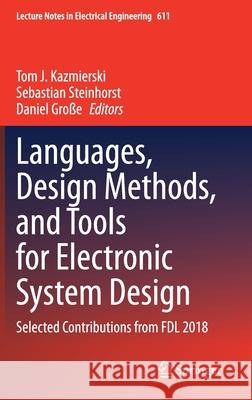Languages, Design Methods, and Tools for Electronic System Design: Selected Contributions from Fdl 2018 » książka
topmenu
Languages, Design Methods, and Tools for Electronic System Design: Selected Contributions from Fdl 2018
ISBN-13: 9783030315849 / Angielski / Twarda / 2019 / 192 str.
Languages, Design Methods, and Tools for Electronic System Design: Selected Contributions from Fdl 2018
ISBN-13: 9783030315849 / Angielski / Twarda / 2019 / 192 str.
cena 201,24
(netto: 191,66 VAT: 5%)
Najniższa cena z 30 dni: 192,74
(netto: 191,66 VAT: 5%)
Najniższa cena z 30 dni: 192,74
Termin realizacji zamówienia:
ok. 22 dni roboczych
Dostawa w 2026 r.
ok. 22 dni roboczych
Dostawa w 2026 r.
Darmowa dostawa!
Kategorie:
Kategorie BISAC:
Wydawca:
Springer
Seria wydawnicza:
Język:
Angielski
ISBN-13:
9783030315849
Rok wydania:
2019
Wydanie:
2020
Numer serii:
000367340
Ilość stron:
192
Waga:
0.46 kg
Wymiary:
23.39 x 15.6 x 1.27
Oprawa:
Twarda
Wolumenów:
01
Dodatkowe informacje:
Wydanie ilustrowane











